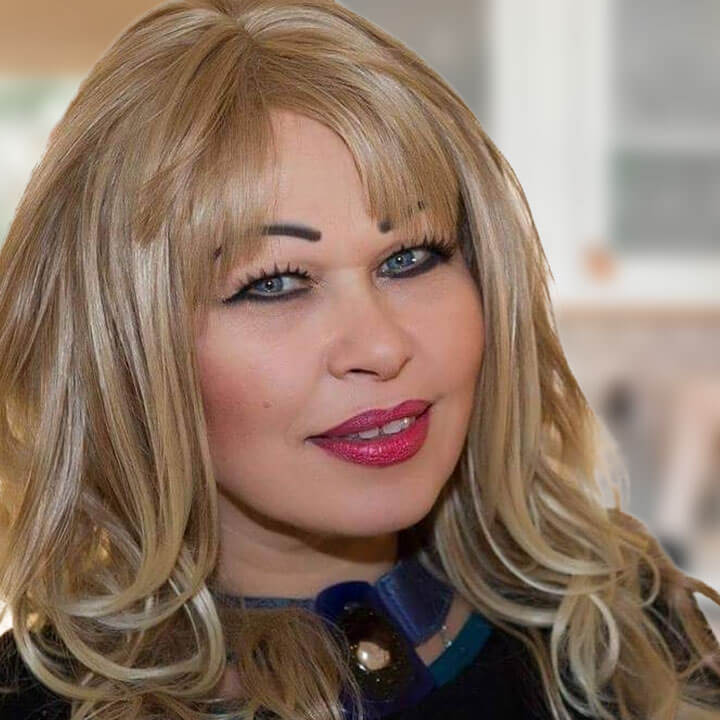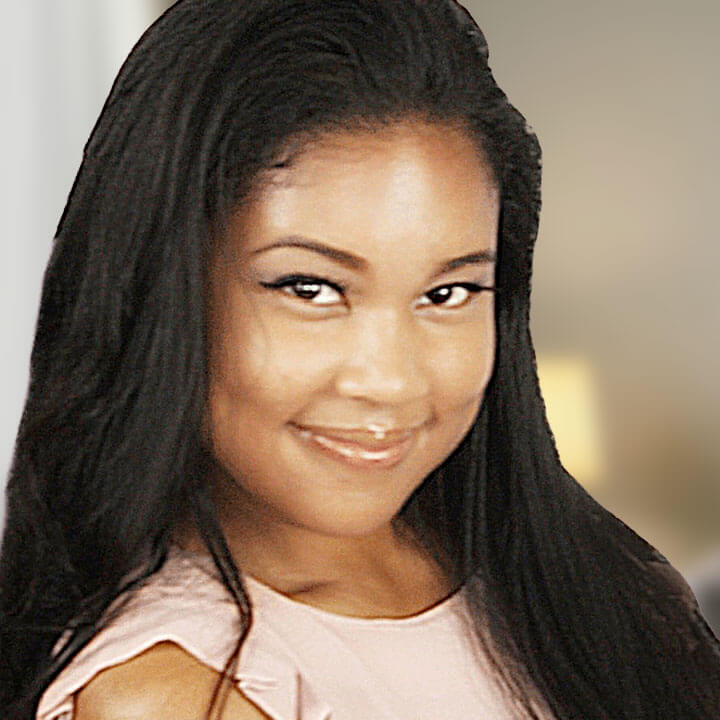 |
|
|

|
SNOWDROP |
| Ext. 891675 |
As a lightworker and professional Psychic, I love to provide my skills and gifts in the journey of h...
 |
|

|
PSYCHIC TITA |
| Ext. 896394 |
Offers precise clarification and provides holistic solutions.
 |
|

|
BROTHER JOHN |
| Ext. 895590 |
Not all of us have luck, yet we all do have the love and light of a creator. We each have a guiding...
 |
|

|
PSYCHIC REBECCA ELI |
| Ext. 899638 |
Hello, my name is Rebecca Eli, I am a 5th generation natural born gifted psychic and empath. I have...
 |
|

|
PSYCHIC LANCE |
| Ext. 887982 |
I am highly attuned psychic, dedicated to solving life's difficulties and elevating the life conditi...
 |
|

|
JOHN ALEXANDER |
| Ext. 891621 |
I am a highly successful psychic who assists individuals by providing unique readings, consultations...
 |
|

|
MISS KIM |
| Ext. 894575 |
I've used angel cards and chakra cards with my "clair-gifts" to gain a deeper understanding of the e...
 |
|

|
PSYCHIC CLARISSA |
| Ext. 881434 |
Questions Answered. Grief Banished!
 |
|

|
ORACLE SIREN ROSE |
| Ext. 893163 |
Experience a moment in time with the Oracle Siren Rose for a life-shifting transformational happenst...
 |
|

|
LOVE SPECIALIST DANA |
| Ext. 895514 |
Assist her clients to a sense of well being. Delivers love, peace and empowerment.
 |
|

|
LINA HEALING AND LOVE |
| Ext. 896230 |
Highly experienced and gifted psychic here to help guide you with truth and caring.
 |
|

|
PROPHETESS PHYLLIS |
| Ext. 893555 |
ARE YOU WORRIED? I CAN HELP. I have used my gift of prophecy and numbers for over 30 years to assist...
 |
|
   |
|
 |
Home
>>
Dreams
>>
Dreams Articles
|
Magic Dream Symbols in Alice in Wonderland |
 While watching the film Alice in Wonderland, you might wonder why you feel so fascinated or exhilarated. In essence, it is because the imagery is from that well of subconscious imagery that we all share. The ability to manipulate this imagery is what made Lewis Carroll, the writer of “Alice in Wonderland,” such a powerful teller of fairy tales. The imagery in the movie and the book is a verdant field for all.
While watching the film Alice in Wonderland, you might wonder why you feel so fascinated or exhilarated. In essence, it is because the imagery is from that well of subconscious imagery that we all share. The ability to manipulate this imagery is what made Lewis Carroll, the writer of “Alice in Wonderland,” such a powerful teller of fairy tales. The imagery in the movie and the book is a verdant field for all.
It is important when watching this movie to remember that Alice’s Adventures in Wonderland is all one big long dream. That is why there are so many real world elements mixed with the magical and impossible. The tale is important as it shows us how we dream and how we can focus our meditations to get some kind of awareness of our fears and hopes.
When it comes to symbols this is a very complicated tale. Here is a look at some of the dominant imagery in this famous tale:
The Garden
The first big symbol that we encounter is the garden where Anne’s sister is reading her a boring story. The garden may symbolize the Garden of Eden, an idyllic space of beauty, and innocence that Alice is not permitted to access. On a more abstract level, the garden may simply represent the experience of desire, in that Alice focuses her energy and emotion on trying to attain it. The garden can also symbolize innocence. At any rate, she leaves it to go off on her own adventures.
The Caterpillar’s Mushroom
It is hard to find a psychiatrist that does not interpret this mushroom as phallic symbol. It is not until she eats a bit of this mushroom that she masters growing too large or too big. Growing too big and too large in this tale symbolizes puberty and the frustrations of trying to recognize one’s sexuality. Eating anything in a dream symbolizes what we feed our brains with.
The Fall into the Rabbit Hole
The fall into the Rabbit Hole is all about falling asleep or losing consciousness. The hole itself is lined with marmalade jars which symbolize memories and the contents of the subconscious mind. At one point, she starts daydreaming while falling. Many psychologists say that dreaming about a hole is actually a sexual dream.
The Tiny Door
Once she is at the bottom of the hole, she finds herself confronted by a tiny door. Carroll dramatizes the frustrations that occur with growing older, as Alice finds herself either too small or too large to fit through the passageway into the garden. After drinking the potion, Alice shrinks and cannot reach the key on the table. This is all about accountability and how we are all damned if we do and damned if we don’t and how adults are often limited by maturity. This has to do with the helplessness of who we are in general. It is also impossible to return to the innocence of the womb.
The Pool of Tears
After finishing the cake that says “EAT ME,” Alice grows to nine feet tall and finds that she can barely get an eye down to the doorway. She begins to cry, and her massive outpouring of tears form a sizable pool at her feet. She fans herself and meets a mouse who leads her to shore. This symbolism is often interpreted to mean how we are often punished for experiencing our emotions and not acting rationally.
The White Rabbit
The White Rabbit symbolizes that authority figure that does not understand us, misinterprets us, and then makes us follow nonsensical rules. The White Rabbit mistakes Alice for his housemaid, Mary Ann, and commands her to go to his house and fetch his things. Startled by the Rabbit’s demands, Alice obeys and soon finds his house. Of course, in the house, she eats some cakes that make her too large to leave the house, which is about not being able to handle restrictions.
The Caterpillar Smoking a Hookah
Alice comes across a Caterpillar that is resting on top of a giant mushroom and smoking a hookah pipe. The two stare at each other in silence for a while before the Caterpillar asks Alice, “Who are you?” Alice has trouble explaining who she is to the antagonistic and contemptuous Caterpillar. This dream symbol is thought to symbolize intimidation by the opposite sex. When the Caterpillar asks Alice “Who are you,” she finds that she doesn’t know who she is anymore. The Caterpillar aggravates Alice’s uncertainty about her constantly changing size. The Caterpillar also may represent the threat of sexuality, as suggested by its phallic shape.
The Cheshire Cat
The Cheshire Cat, which is nothing but a smile, symbolizes the persistence of traumatic memories and how they can inform our psyche. He tells her it’s a mad world. At one point in the tale, the Red Queen tries to murder this cat. However, rather than be murdered, the cat just vanishes with nothing left, but its smile.
Duchess and the Pepper
In fact, it is because she meets the cat in a house with a Duchess and a Baby who keep sneezing from pepper. Despite the fact that the pepper makes her and the baby sneeze, the Duchess keeps using it. This is about how no matter how intelligent we are we keep repeating our mistakes.
The Mad Hatter’s Tea Party
Alice attends a Tea Party which is also attended by the Mad Hatter, the March Hare, and the Dormouse. This party is a circus when it comes to the interpretation of language. This entire scene is full of nonsense. Language games at the tea party underscore the inconsistency of Wonderland, but also imply that the ordering principles that govern Alice’s world are just as arbitrary.
The Croquet Game with the Red and White Queen
The Red and White Queen symbolizes the two sides of Anne’s personalities. The Red Queen is her more sexual side and the White Queen is her more virginal side. The croquet game played with flamingo’s and hedgehogs symbolizes how we can never go home again. The rules and practices of the garden are just as idiosyncratic and maddening as the rest of the locales she has visited. The beds of bright flowers she pined for are nothing more than ridges and furrows, and the roses are painted red rather than being naturally beautiful. The garden is not an idyllic place of calm pastoral beauty, but an artificially constructed space that becomes a source of anxiety and fear for Alice. This ultimately is about how with maturity often comes anxiety.
|
|
|
Comments
log in to post a comment. If you don't already have a My Spirit Now account,
sign up now.
|
 |
|



